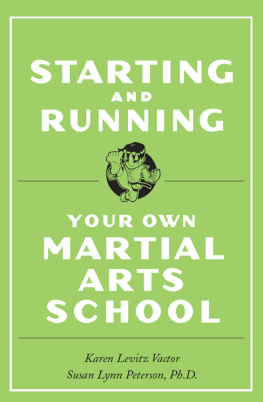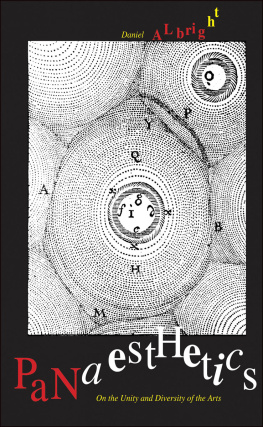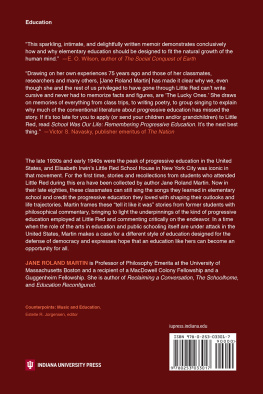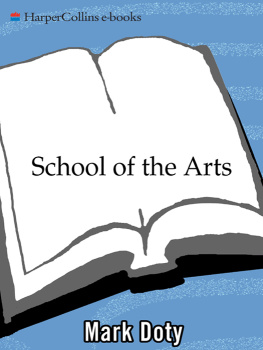THE MUSES GO TO SCHOOL
ALSO BY HERBERT KOHL
36 Children
The Question Is College: On Finding and Doing Work You Love
I Wont Learn from You and Other Thoughts
on Creative Maladjustment
Should We Burn Babar? Essays on Childrens
Literature and the Power of Stories
Stupidity and Tears: Teaching and Learning in Troubled Times
She Would Not Be Moved: How We Tell the Story of
Rosa Parks and the Montgomery Bus Boycott
The Herb Kohl Reader: Awakening the Heart of Teaching
THE MUSES GO TO SCHOOL
Inspiring Stories About the
Importance of Arts in Education
Edited by HERBERT KOHL
and TOM OPPENHEIM

2012 by the Stella Adler Studio of Acting
All rights reserved.
No part of this book may be reproduced, in any form, without written permission from the publisher.
The Stella Adler Studio of Acting wishes to extend its gratitude and appreciation to Thomas Oppenheim for his contributions to this book.
Requests for permission to reproduce selections from this book should be mailed to: Permissions Department, The New Press, 38 Greene Street, New York, NY 10013.
Published in the United States by The New Press, New York,
2012 Distributed by Perseus Distribution
LIBRARY OF CONGRESS CATALOGING-IN-PUBLICATION DATA
The muses go to school : inspiring stories about the importance of arts in education/ edited by Herbert Kohl and Thomas Oppenheim.
p. cm.
ISBN 978-1-59558-539-4 (hc)
1. ArtsStudy and teaching. 2. EducationAims and objectives. I. Kohl, Herbert R. II. Oppenheim, Tom.
NX280.M87 2012
The New Press was established in 1990 as a not-for-profit alternative to the large, commercial publishing houses currently dominating the book publishing industry. The New Press operates in the public interest rather than for private gain, and is committed to publishing, in innovative ways, works of educational, cultural, and community value that are often deemed insufficiently profitable.
www.thenewpress.com
Composition by dix!
This book was set in Minion Pro
2 4 6 8 10 9 7 5 3 1
CONTENTS
Preface: The Necessity of Art in Public Education
by Herbert Kohl
Introduction: The Arts and Social Justice
by Tom Oppenheim
THE MUSES GO TO SCHOOL
Preface: The Necessity of Art
in Public Education
The world we live in shifts more quickly than the continental plates beneath us and we feel the effects more directly. Young people sense these shifts and have new ways, through social media, of communicating their anxieties, hopes, and enthusiasms regularly with friends and with people beyond their neighborhoods, often beyond national boundaries. These youngsters make films, take pictures, send text messages, communicate across the globe with Web sites and blogs of their choice, and have their own Facebook and YouTube identities. They also love to dance and sing and act with their friends. They do not separate the electronic from the physical, the virtual from the actual worlds they live in. There is a marriage of performance and electronic connection that young people engage in throughout the world at the same time that their schools close down the arts; force rigid curricula that pass for literacy and math programs; promise jobs that dont exist; and turn the magic of learning about the wonders of the world, nature, and other peoples and cultures into rigid, tortuous sitting in claustrophobic rooms and constant testing that has little or no meaning for intellectual, personal, and social development.
Some politicians, publishers, academic statisticians, and educational entrepreneurs may profit from this cynical strategy of conformity and management of learning. In fact, in order to keep the testing-industrial complex in power, the main weapon is fearfear on the part of the parents that their children wont get into a good college or get a good job, and fear on the part of the kids of parental and social disapproval.
Social media and participation in the arts are redeeming for the young. They give children (and adults) power, joy, challenge, a sense of their own personal capacity to do wonderful things. And they provide common bonds with other people the same age. Too many adults worry about the distraction of young minds from the focused activity of conforming to tests and scripted curriculum, but even when the young seem to comply, they dont. They live double lives: classroom lives and social and artistic lives. The goal of introducing the arts as central to schooling is to join these two aspects of living and learning into a harmonious if sometimes fractious whole.
When Bob Marley died in 1981, his death was devastating to my children, who were in high school at the time. My son, Josh, was in a reggae band and played Marley covers beautifully. My middle child, Erica, listened to his music as did my oldest, Tonia. At that time Tonia was developing her hatred of the local high school. It was not because she was a failure. On the contrary, she was a straight-A student. But she was an outspoken feminist and antiwar activist who was fearless when it came to raising sensitive issues in class. Her teachers did not appreciate her outspokenness and tried feebly to appeal to my wife Judy and me to rein her in. We felt that if her questions were intelligent and provocative, we would be 100 percent behind her, which we were. But we also realized that she was very unhappy in school, and it took a toll on her feelings about herself. Was she a problem or was the school a problem?
She faced the same issue faced by other students who deviate from often foolish norms that are imposed on high school students. Our society has experienced extreme versions of this rejection and alienation, such as, for example, the events at Columbine. Tonia was not an extremist, however; she was an artist, for which, as her father, I am grateful. The arts become, for many young people, a way to express ideas, feelings, understanding, and concerns that could otherwise end up in inarticulate acts of thoughtless and usually self-destructive violence.
I didnt know much about the depth of Tonias feelings about Bob Marley. One day she called me into her bedroom. She wanted to show me something. She went to the closet and took out a carefully wrapped package, about two feet by three feet, untied the string, and took out the most beautiful and passionate paintings of Marley from the time he was about three or four through his music career to his last days when, wasted by cancer, he died at the age of thirty-six.
I was moved by the paintings, but wondered how she had done them. We had never known her to be a painter, she had never taken an art class, or spoken about this passion. She had had no opportunity to learn about painting in school. It was a private and wonderful obsession.
A year and a half later, just before she was to graduate from high school, she swore to us that she would never go to school again. She felt that she had no opportunity to express and develop her skills or to have her ideas heard in the context of school. It is perilous at the age of seventeen to act on negativity rather than move toward something positive, no matter how irregular the path might be. So we said, What about art school? and her answer was, Depends.
We spent the next year in London because of my work, and Tonia did go to two art schoolsone modern and wild, the other traditional. The following year she went to the Rhode Island School of Design, where she made lifelong friends and honed her skills as an artist. But she is not a painter now. Given her education and her engagement with the arts, and through her parents association with progressive education ideas, she has become a game designer working in the computer world. A feminist still, she and a friend founded a company that develops virtual reality platforms and programs for games designed primarily for young women.







